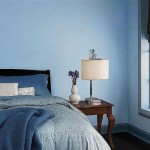Van Gogh's Painting of the Bedroom in Arles: An In-Depth Analysis
Vincent van Gogh's painting of the Bedroom in Arles is a seminal work in the history of Post-Impressionism. Created in 1888, during Van Gogh's time in the southern French town of Arles, the painting depicts the artist's modest bedroom in the Yellow House, a particular place that he rented for a brief period.
The painting is renowned for its bold use of color and simplified forms. Van Gogh used bright, contrasting hues to create a sense of heightened reality. The walls are painted a vibrant yellow, while the bed, chairs, and other furniture are rendered in deep reds, greens, and blues. The overall effect is one of intense luminosity and visual energy.
In addition to its color scheme, the Bedroom in Arles is also notable for its unique perspective. Van Gogh painted the room from an elevated vantage point, looking down at the bed and other furnishings. This allows the viewer to see the room from a comprehensive, almost aerial perspective, which emphasizes the sense of order and stillness in the composition.
Beyond its formal qualities, the painting also carries significant symbolic and personal meaning. For Van Gogh, the bedroom in Arles was a sanctuary, a place of rest and creativity. He saw the room as a reflection of his inner self, and the painting is imbued with a sense of intimate familiarity.
Van Gogh's Bedroom in Arles has been widely reproduced and has become one of the most iconic paintings in the world. It is held in the collection of the Van Gogh Museum in Amsterdam, where it continues to inspire and captivate visitors from around the globe.
Symbolism and Meaning
The Bedroom in Arles can be interpreted on several levels, with various symbols and meanings embedded within the composition. Some of the key symbolic elements include:
- The Bed: The bed is the focal point of the painting and represents Van Gogh's personal space and sanctuary. It is a symbol of rest, relaxation, and the renewal of creative energy.
- The Chairs: The two chairs in the room represent Van Gogh's desire for companionship and friendship. They are empty, indicating the artist's loneliness and longing for connection.
- The Window: The open window symbolizes the connection between the inner and outer worlds. It represents Van Gogh's yearning for escape and the desire to transcend the confines of his physical space.
- The Mirror: The small mirror on the wall reflects the artist's own image, implying self-reflection and introspection.
Influence and Legacy
Van Gogh's Bedroom in Arles has had a profound influence on subsequent generations of artists. Its innovative use of color and simplified forms paved the way for expressive and non-representational styles of painting in the 20th century.
Fauvism, a movement characterized by bold and vivid colors, was directly inspired by Van Gogh's work. Expressionist artists, such as Edvard Munch and Ernst Ludwig Kirchner, also drew inspiration from the Bedroom in Arles, exploring the emotional and psychological dimensions of art.
The painting continues to be a source of inspiration for artists and designers, as well as a beloved and recognizable masterpiece in the world of art history.

Bedroom In Arles Wikipedia

A Closer Look At Bedroom In Arles By Vincent Van Gogh

Vincent S Bedroom In Arles Van Gogh Reproduction Hand Painted Oil On Canvas

Van Gogh S Bedroom Gets Digital Makeover Bbc News

The Bedroom Gogh Western Painting Famous Paintings Canon Creative Park

Van Gogh The Bedroom

Choosing Van Gogh And An Untidy Bedroom Reinventingrid

Modernist Art History Post Impressionism Kaki Ng Talks On Vincent Van Gogh S Bedroom At Arles 1889

Vincent Van Gogh Bedroom In Arles 1888 Painting Reprint Ebay

What Were The Original Colors Of Van Gogh S Paintings Studio








